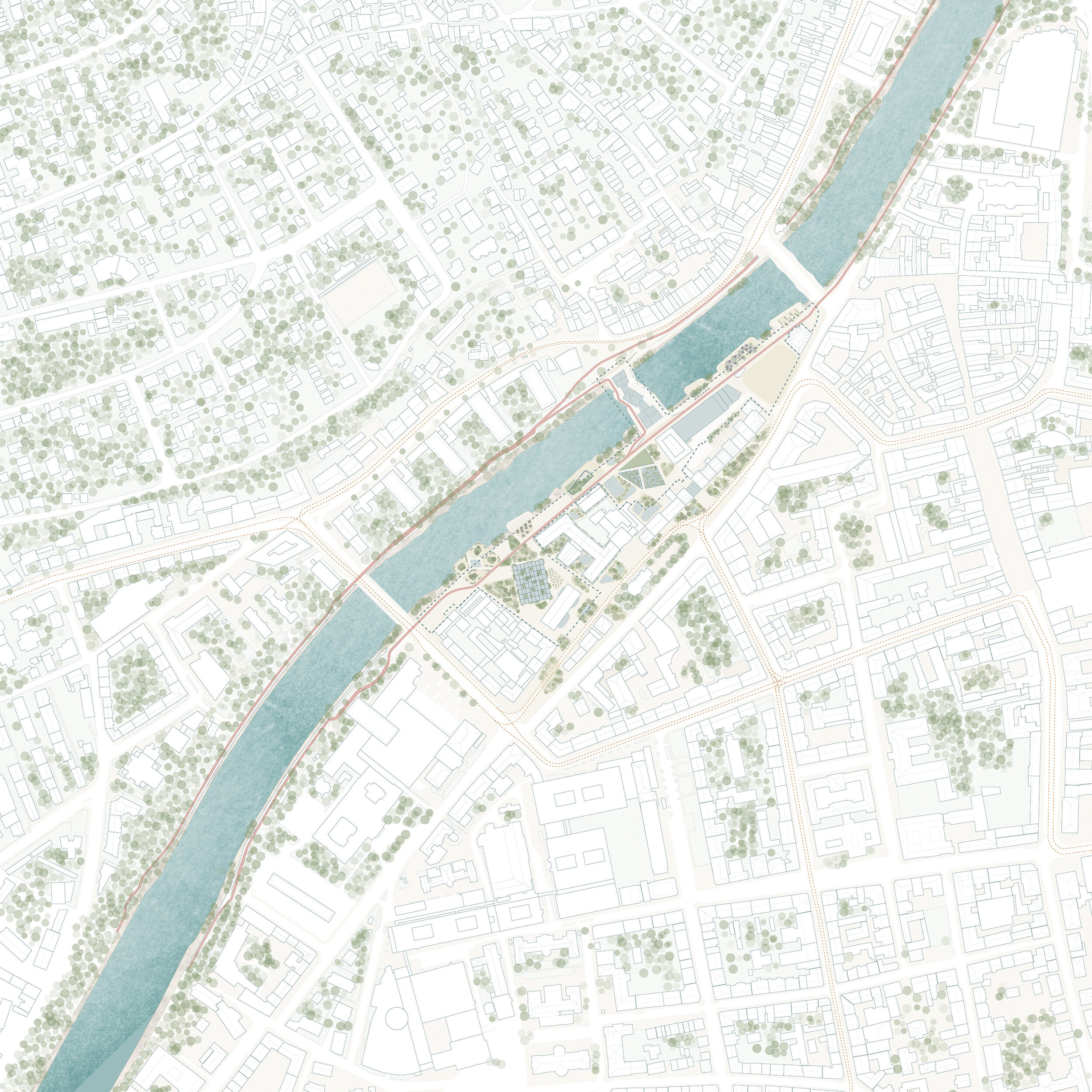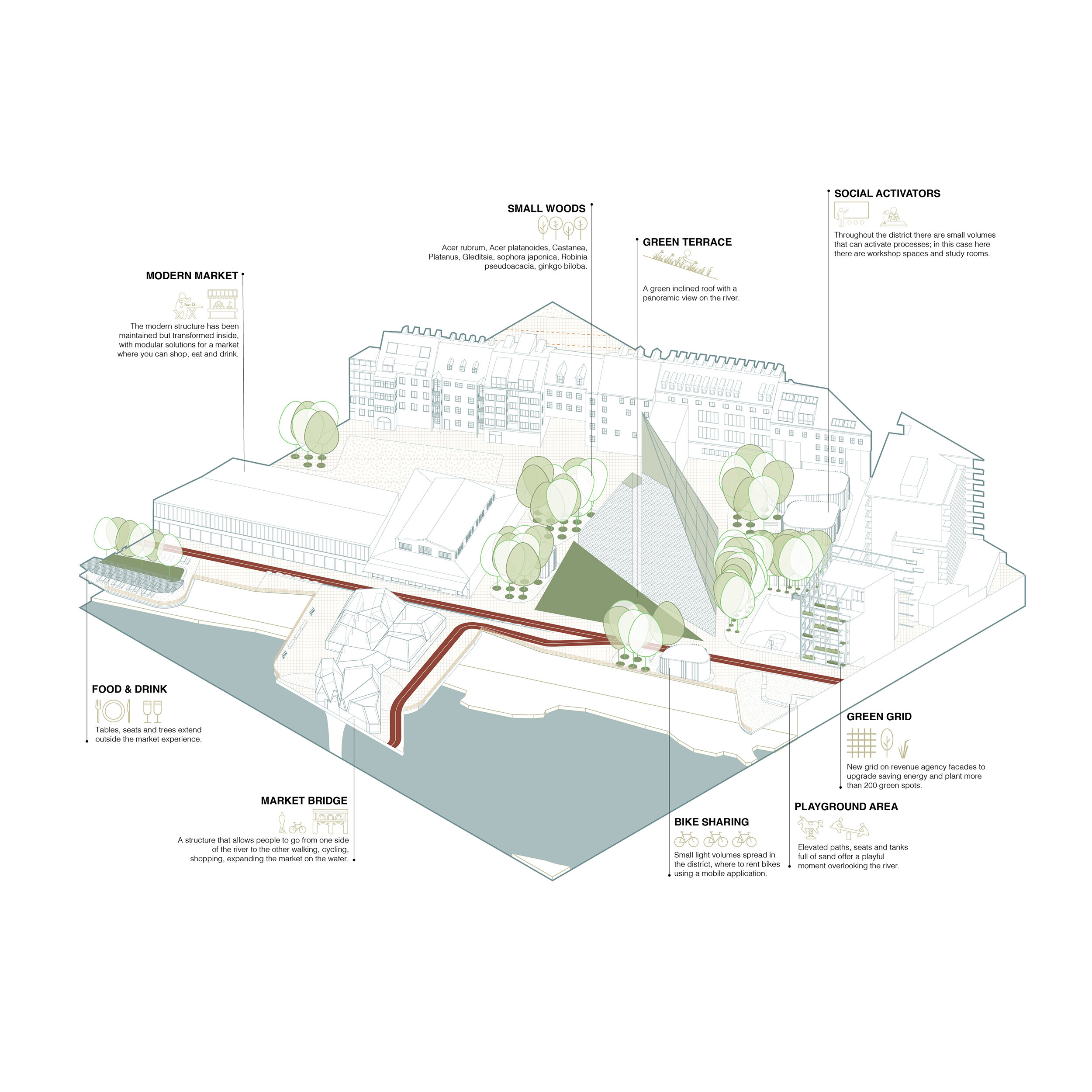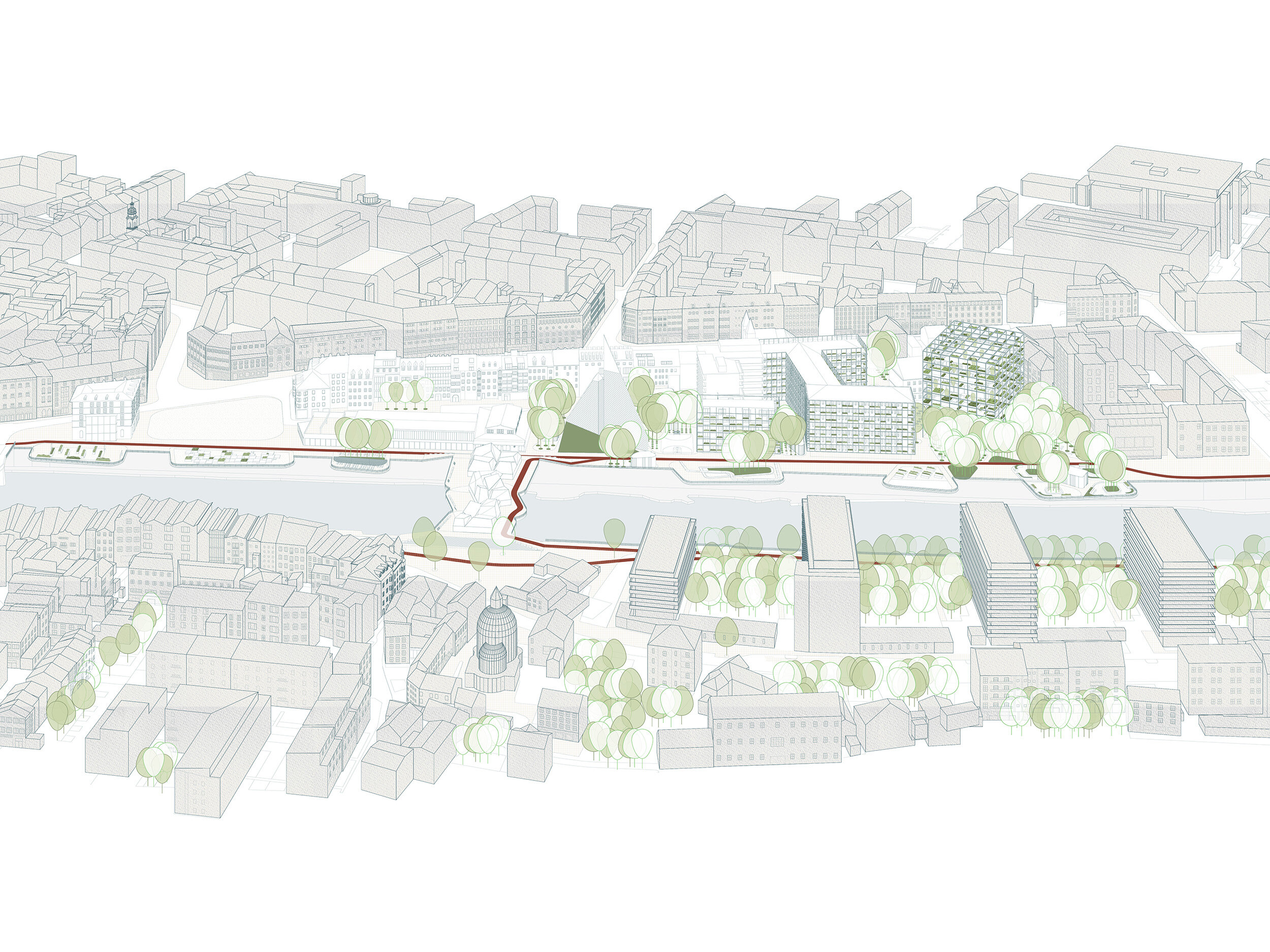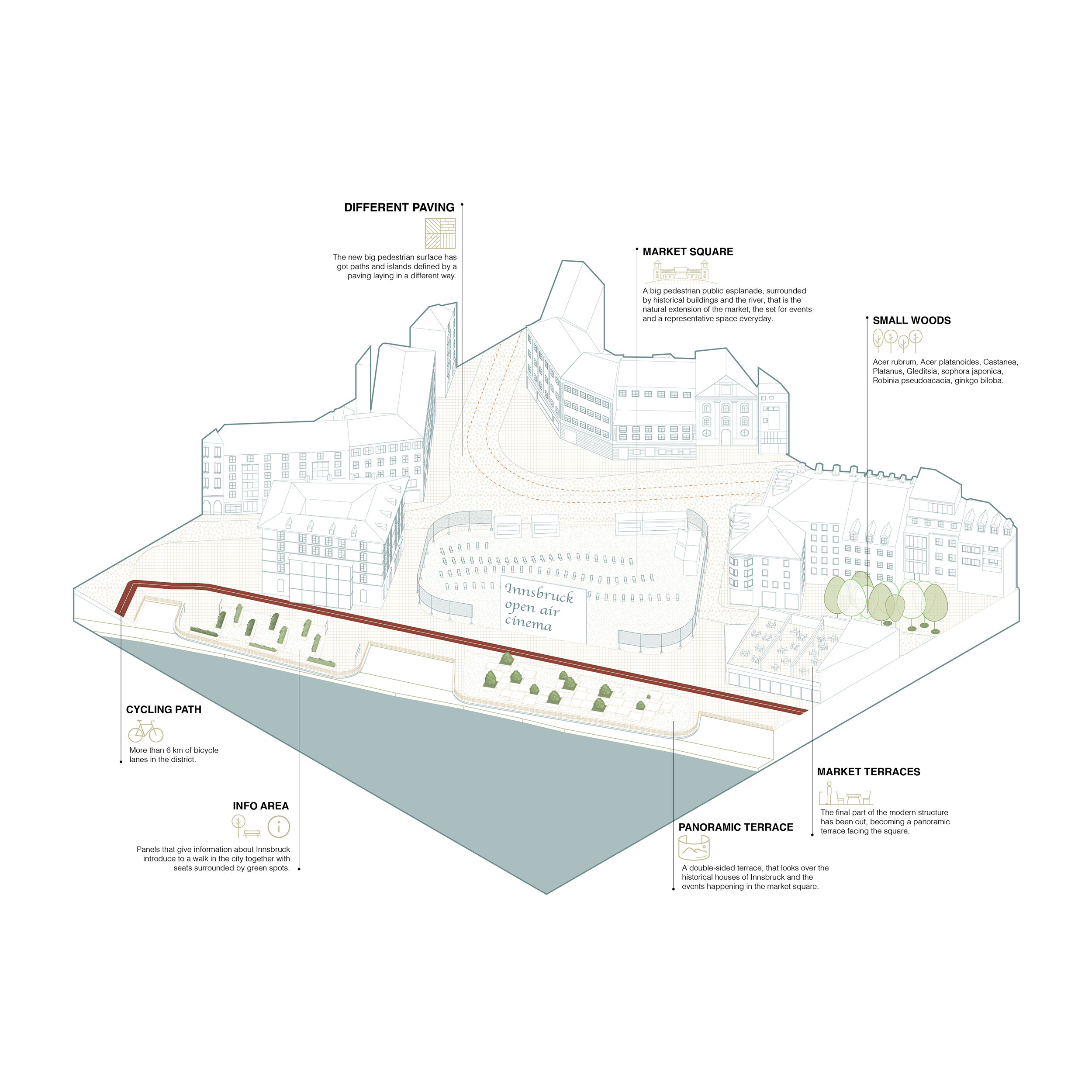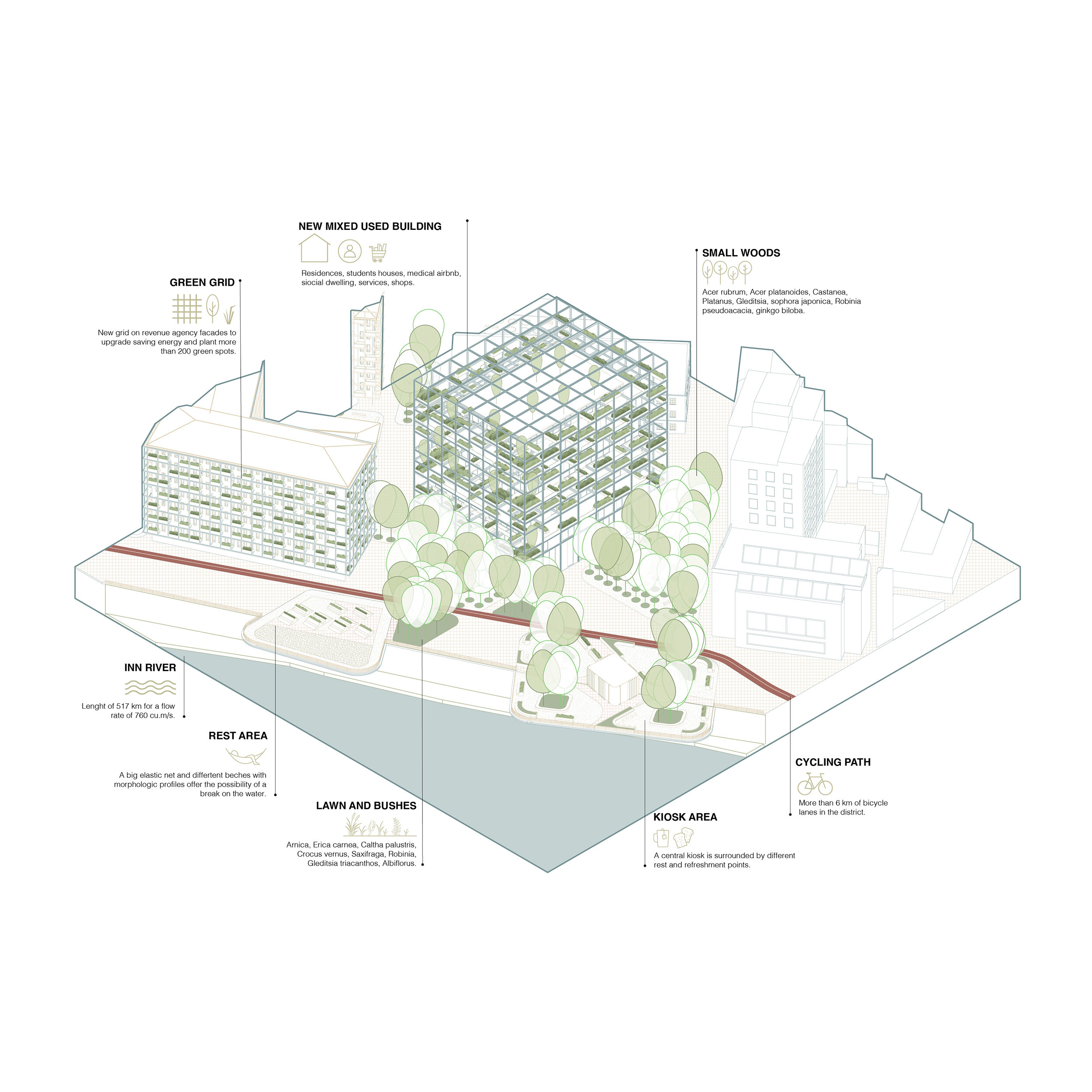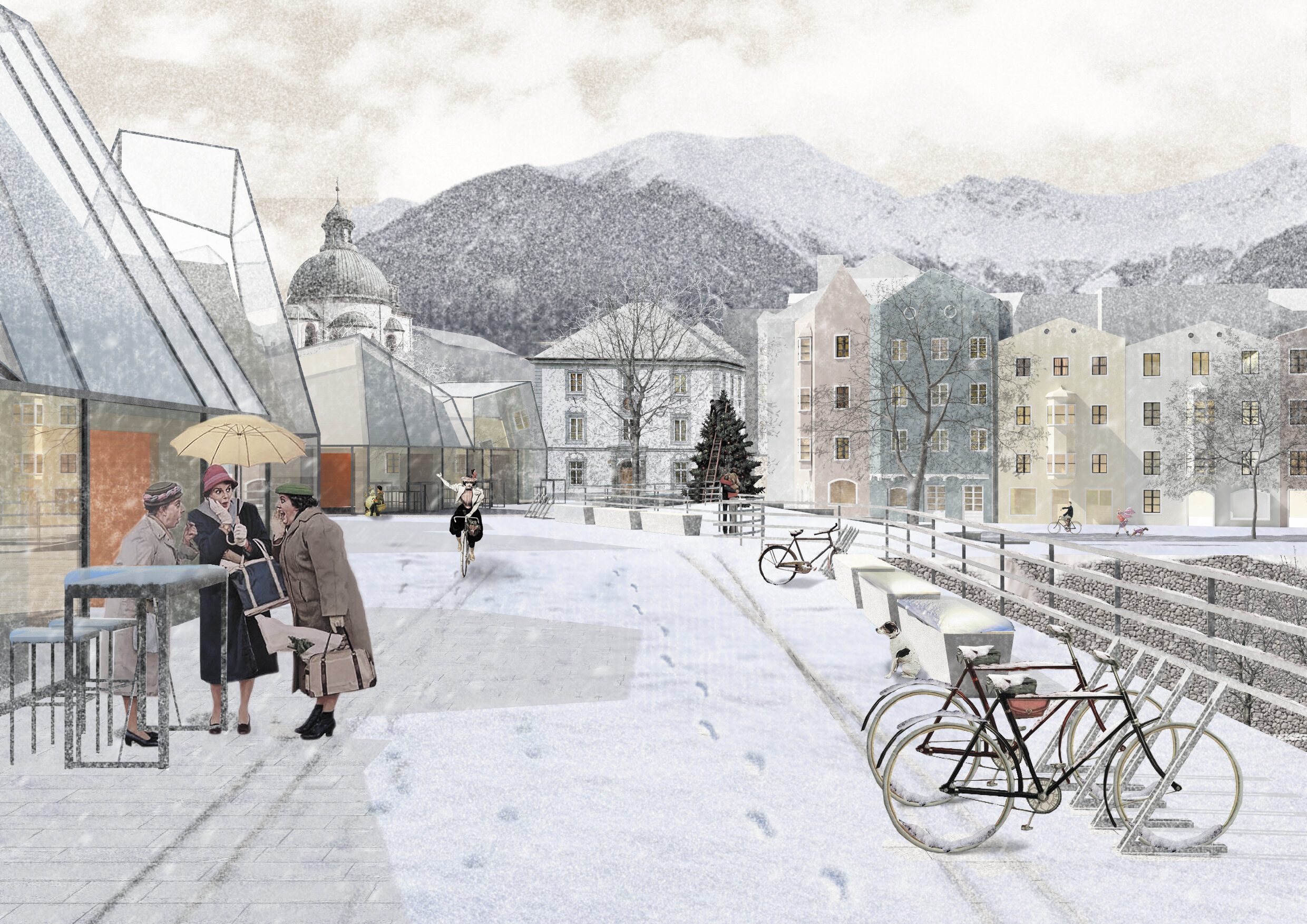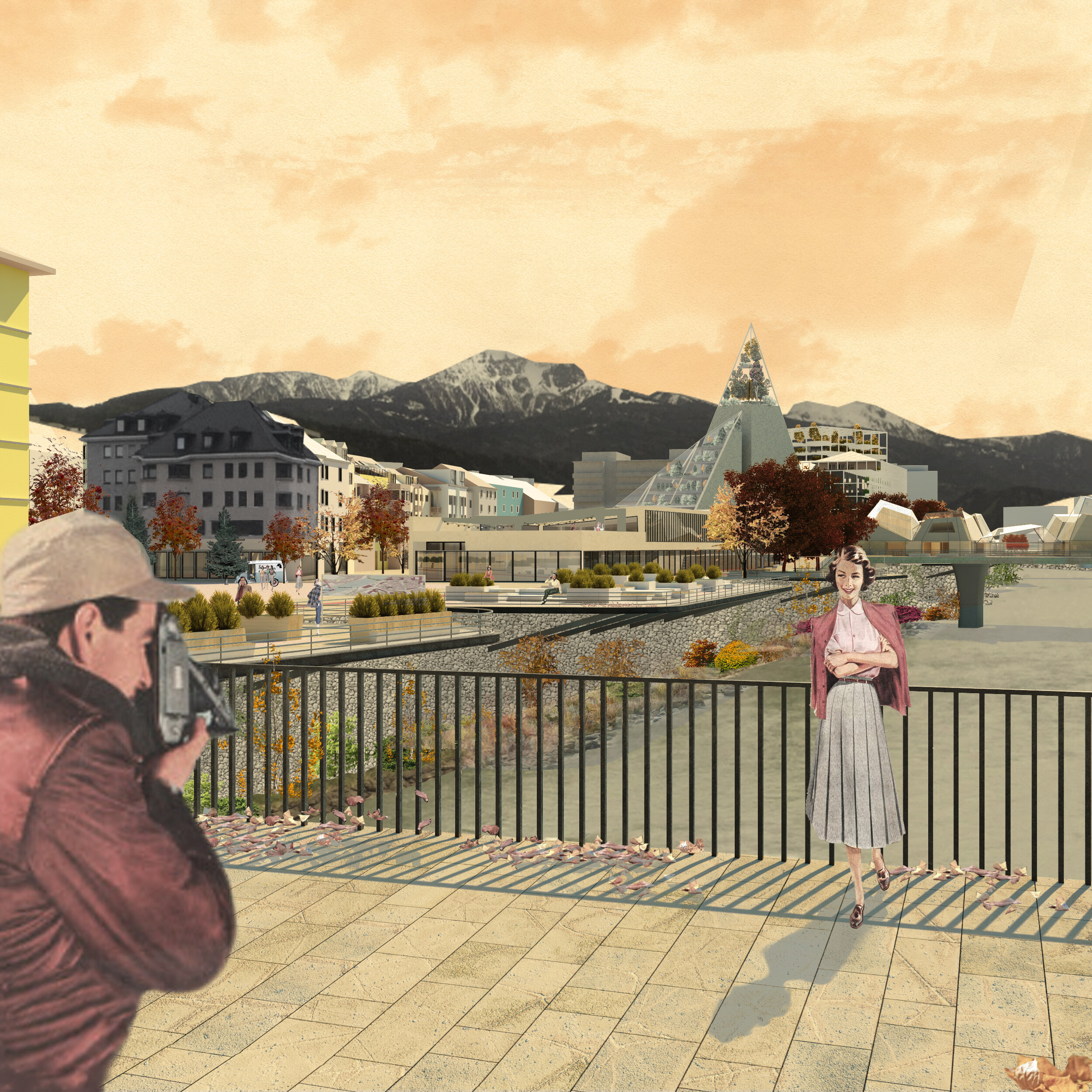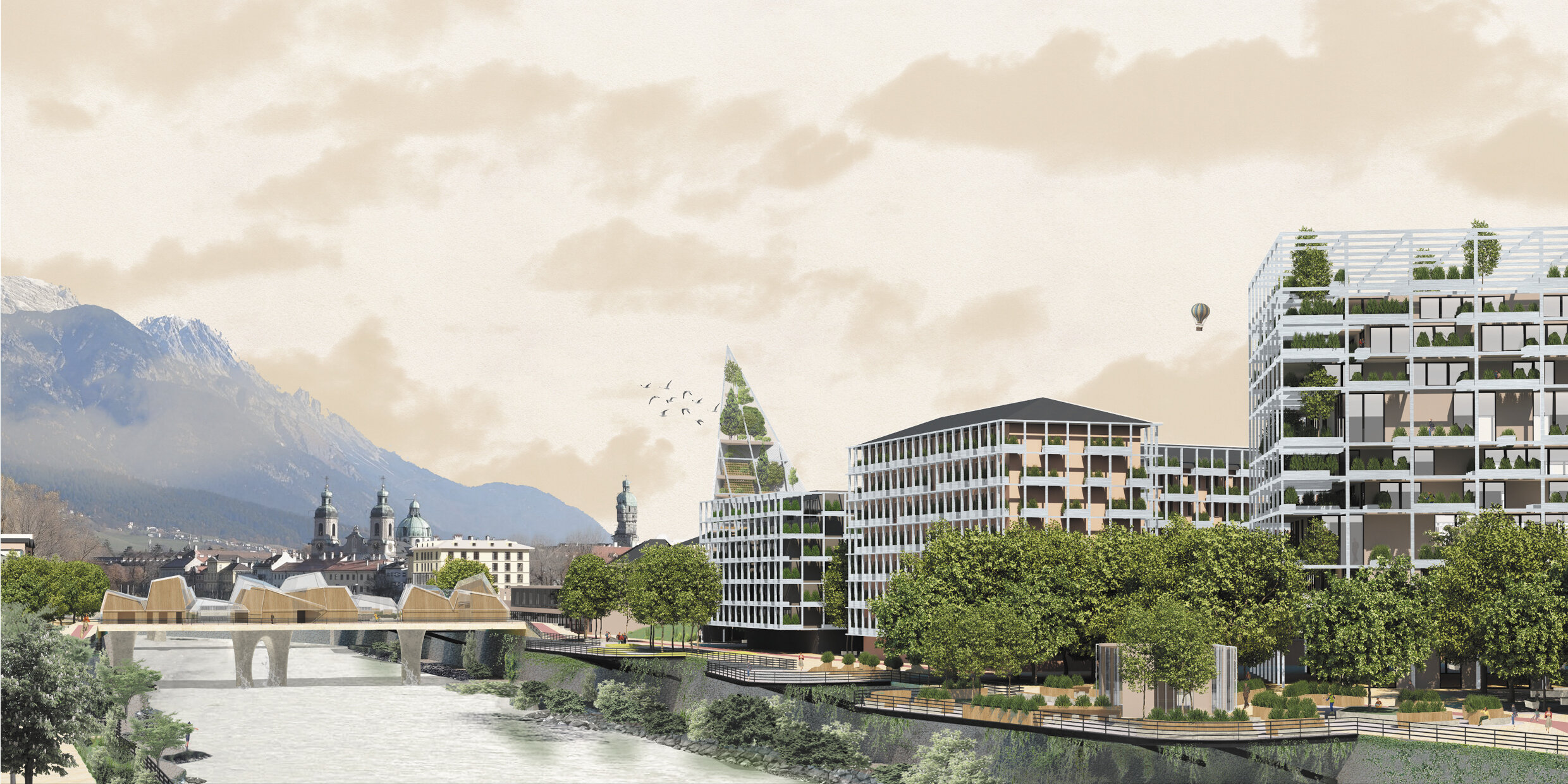Gruner Raumplam
1. FUTURE VISION
We envision future cities to be sustainable on every level, inclusive, without air and noise pollution, with free circulation of people and information and with most goods available farm-to-table. Cities should be organic environments, rather than concrete agglomerates surrounded by nature. The first step to achieve this vision is urban traffic reduction linked to a responsible use of resources. This urban planning approach gives a new meaning to public spaces and has got life quality as starting and arrival point.
2. MOBILITY, RESOURCES, EQUITY
The concept of mobility, with the production and the use of resources, the society, is constantly changing: it effects also the city planning, in the relationship between public and private spaces. The district identified by the competition, between the historical centre and the river, can be the beating heart of all these changes.
Mobility is the keyword for the ground-level planning of the neighbourhood. Since cycling paths have been strengthened and interchange parking lots capacity have been increased in the most peripheral areas, two vehicular lanes have been removed. Hence, the whole district is going to be totally pedestrian, and designed believing that we are living every minute, even the ones that we spend moving from one place to another. The journey should be as important as the destination, comfort and beauty are essential.
One world, so many people: resources must be managed with foresight and respect. Fresh air is one of the main resources we need: green areas have been increased and organized in organic small woods, overcoming the boulevard logic that often creates a barrier between the city and the river. But the biggest threat for air pollution is represented by the huge amount of goods that everyday travels everywhere, while we have knowledge and technologies that allow us to produce lots of them within the territory. The new building situated in the central part of the site is a big greenhouse where people can cultivate good food respecting nature.
Accessible accommodations for students and people in general that are passing through an adjustment period are also a priority for the cities: community life would be better if everybody’s life is better. The concept of popular suburbs with low quality residential and public spaces proved to be a failure, so contemporary cities deserve solutions that are economically, environmentally and socially sustainable. Equity is the keyword for the design of the new building that will rise in the south part of the district, nearby the Police Station and the Revenue Agency.
3. THE DESIGN APPROACH
Our masterplan breaks the urban fabric grid applying a rotation to new objects. Some of the existing volumes on the plot have been removed and the new ones are rotated to change the perspectives and create new public spaces that join the city and the river together. This connection is both physical - thanks to the new layers on the river and the new market-bridge - and an inner perception, with optical cones that generate different corners opening the view to the water.
As it is already happening on the other riverside, the district becomes an organic pedestrian public space, where buildings are not locked in a system of streets, walkways and green areas anymore, but they rise up integrated in the surroundings. Public areas are a system of diffused squares integrated in a pedestrian reality, rather than leftovers of the constructed volumes.
4. URBAN MARKET, BRIDGE, SQUARE
A new urban market structure is composed by the historical building, the modern building, the bridge and the big square that completes the district offering a flexible and representative space.
The historical building keeps its look and its function, but the interior it is totally renovated: new market wooden stands, with a modular design that allows different aggregations, alternating tables and benches that allow people to have a rest and eat some food specialties from the market.
The modern building is maintained but transformed in its final part: the portion facing the square has been cut to have a filter zone between the full volume and the public space with a terrace that aims to be an extension of the building and of the square at the same time.
The new bridge is both a link between the two river banks and the new market: pedestrian and cycling paths allow the traffic to flow quickly on the wings of the bridge, while in the middle there are wooden market stands. Here again a rotation has been applied to the volumes, to continue the concept of non-parallelism that better represents a three-dimensional, 360 degrees view of the city.
The square in front of the historical market becomes a big representative space, very flexible, that can be an open-air extension of the market itself, a space for different kind of events and that naturally is an aggregation space that gather people from the historical centre, the new market structure and from the other shore leading them in the new cultural and leisure district.
5. PENINSULAS, NEW PEDESTRIAN PUBLIC SPACE, GREEN SCHEME
The relationship between the city and the river is going to be reinforced by breaking down the barriers that separate these environments and implementing the proximity to water. The riverfront should not be a third element in between them, but an extension of public spaces, a labile border result of their permeation. Along the district, peninsulas of public spaces stretch out on the shore, continuing a zoning of the land designed as the intersection obtained by tracing flux axis on the plot. The district is perceived as a whole space, not fragmented in elements, not defined by a rigid grid that follows rigid hierarchies, in an organic and inclusive vision. Green areas are conceived to bring nature inside the city, that is why they are concentrated in small woods areas and don’t follow rigid urban and anthropic schemes.
6. MIXED USE BUILDING
Students, families of hospitalized people, young couples or old couples, people in difficulties and people in general: different kind of residences for different situations and lives, together with shops and services, compose the multiform reality of the mixed use building. The volume is similar to surroundings ones, but is rotated and with totally different facades. Lightness and green have been the guidelines for an intervention that want to put in result the context while distancing totally from that, with a particular attention to contemporary standards of sustainability.
7.GREENHOUSE BUILDING
A farm in the city: this iconic building, that wants to attract attention from the district and from the other shore, generating an involving rhythm together with the mixed use building and the new bridge, is the answer to the need of producing resources as close as possible. Free movement of people, free movement of knowledge, less circulation of goods if is not strictly necessary. Cultivating and farming inside the city can be also an opportunity of learning, making friends and spending some free time in an alternative way. Inside this volume, offices, co-working rooms, carpentry workshops and other shared spaces are planned.
Program
Urban
Site
Innsbruck, Austria
Competition
Europan 15
Team
llabb architects
CIRCOLO-A
STUDIOD.architettura
Collaborators: Ilayda Akdemir, Ayşenur Naçar, Kubra Erguvan

